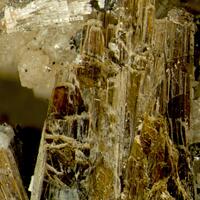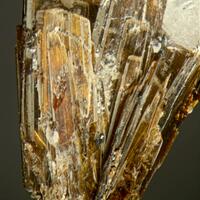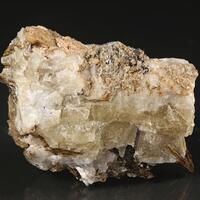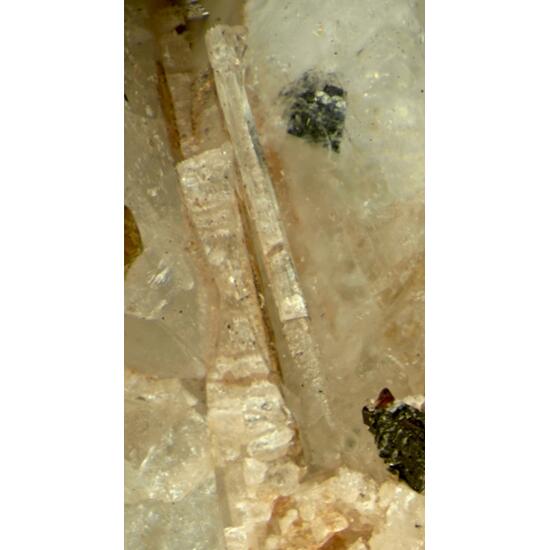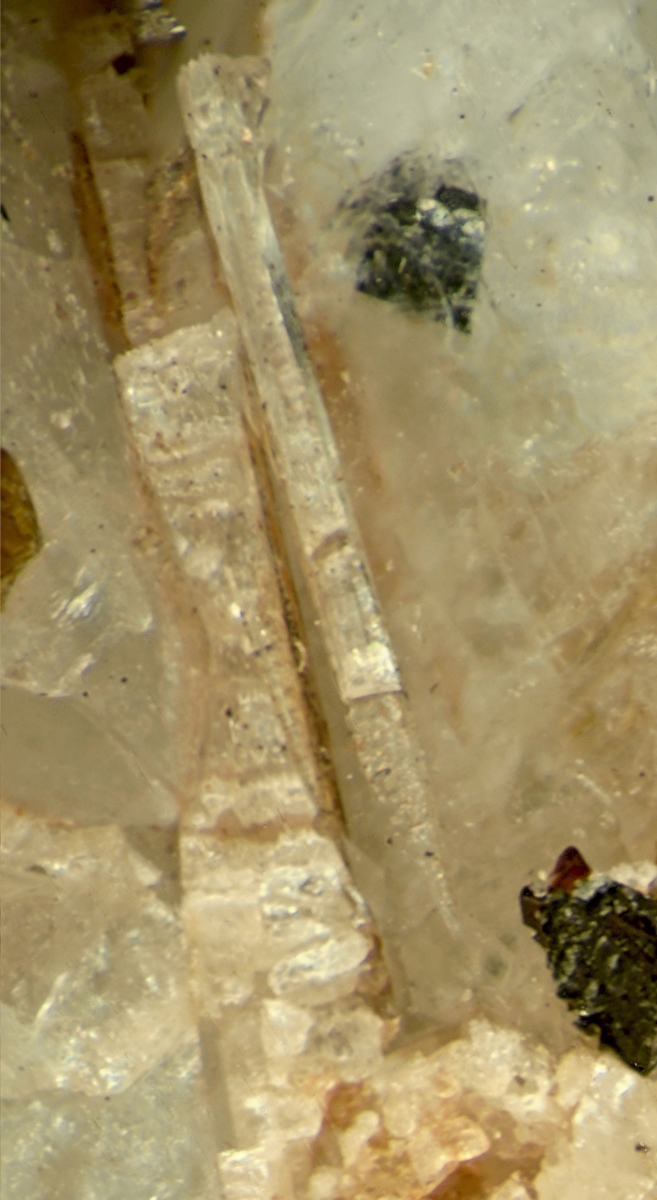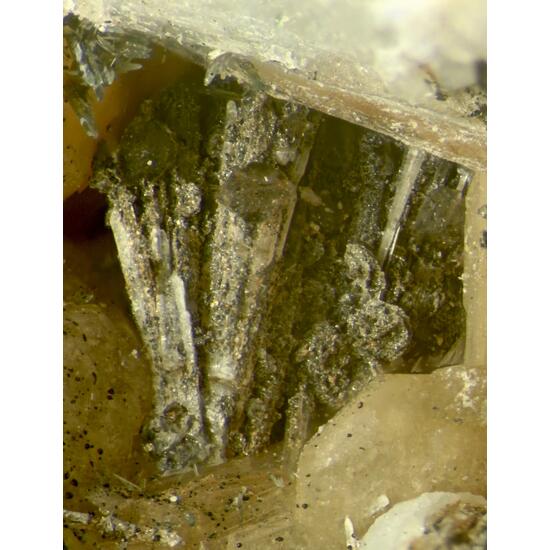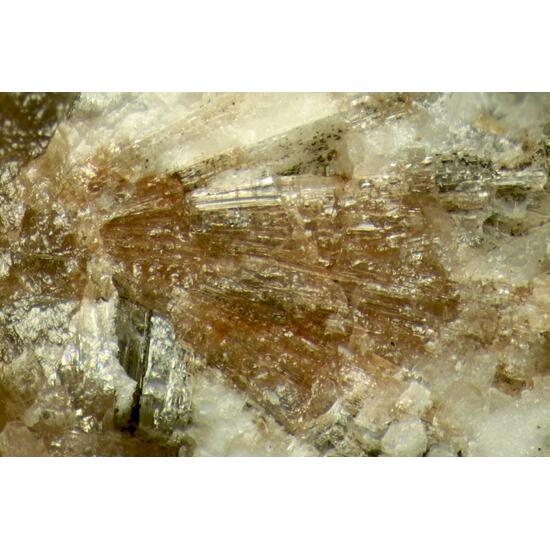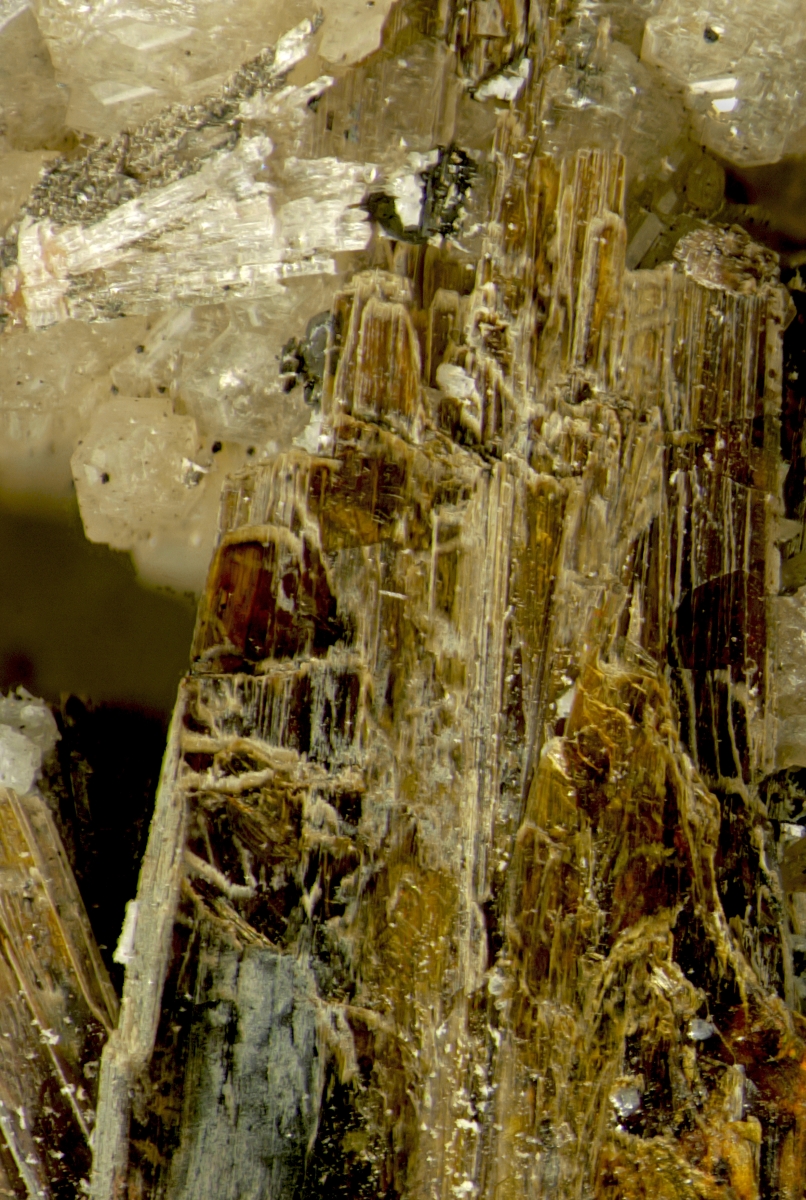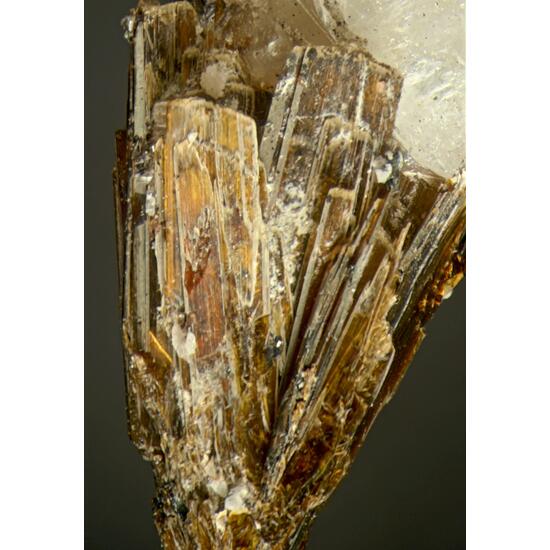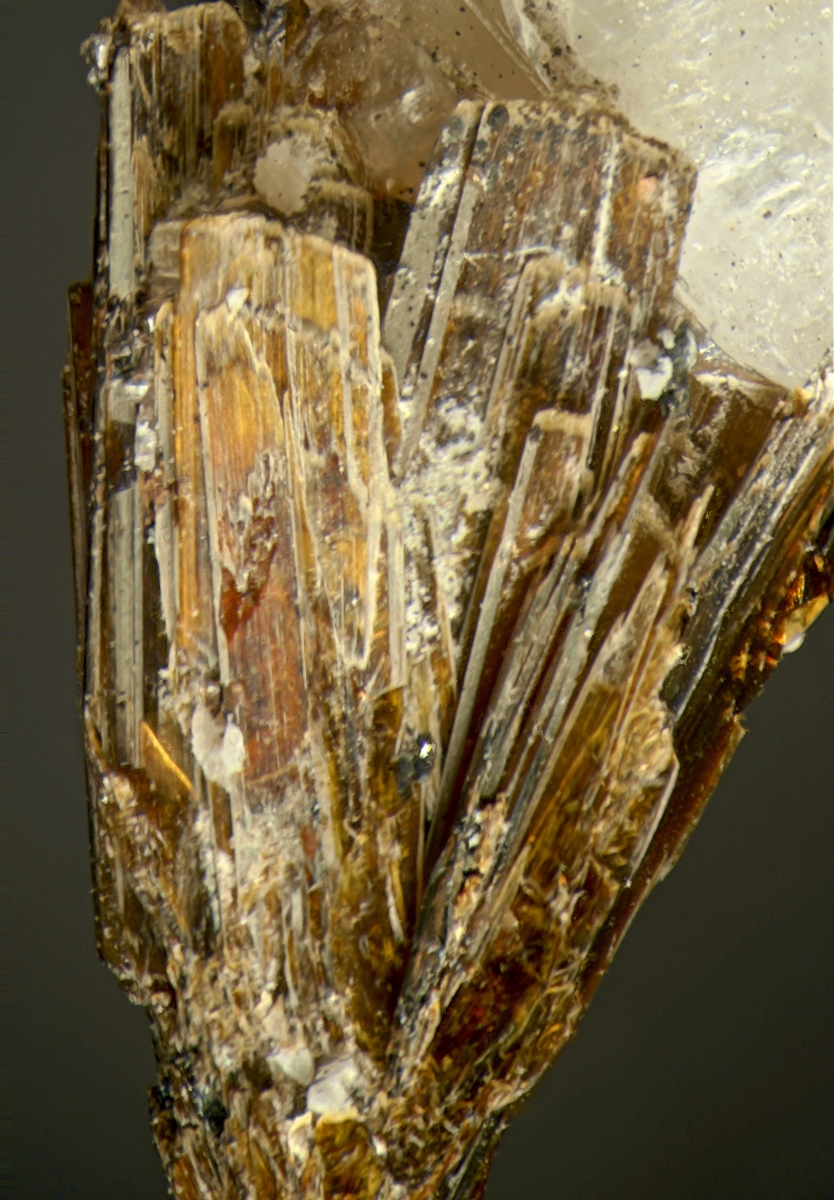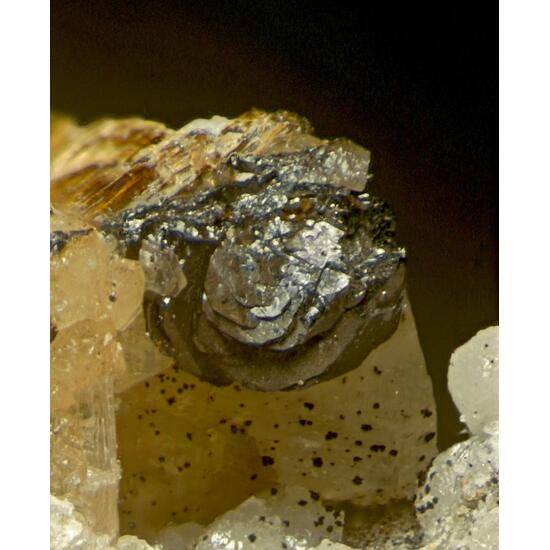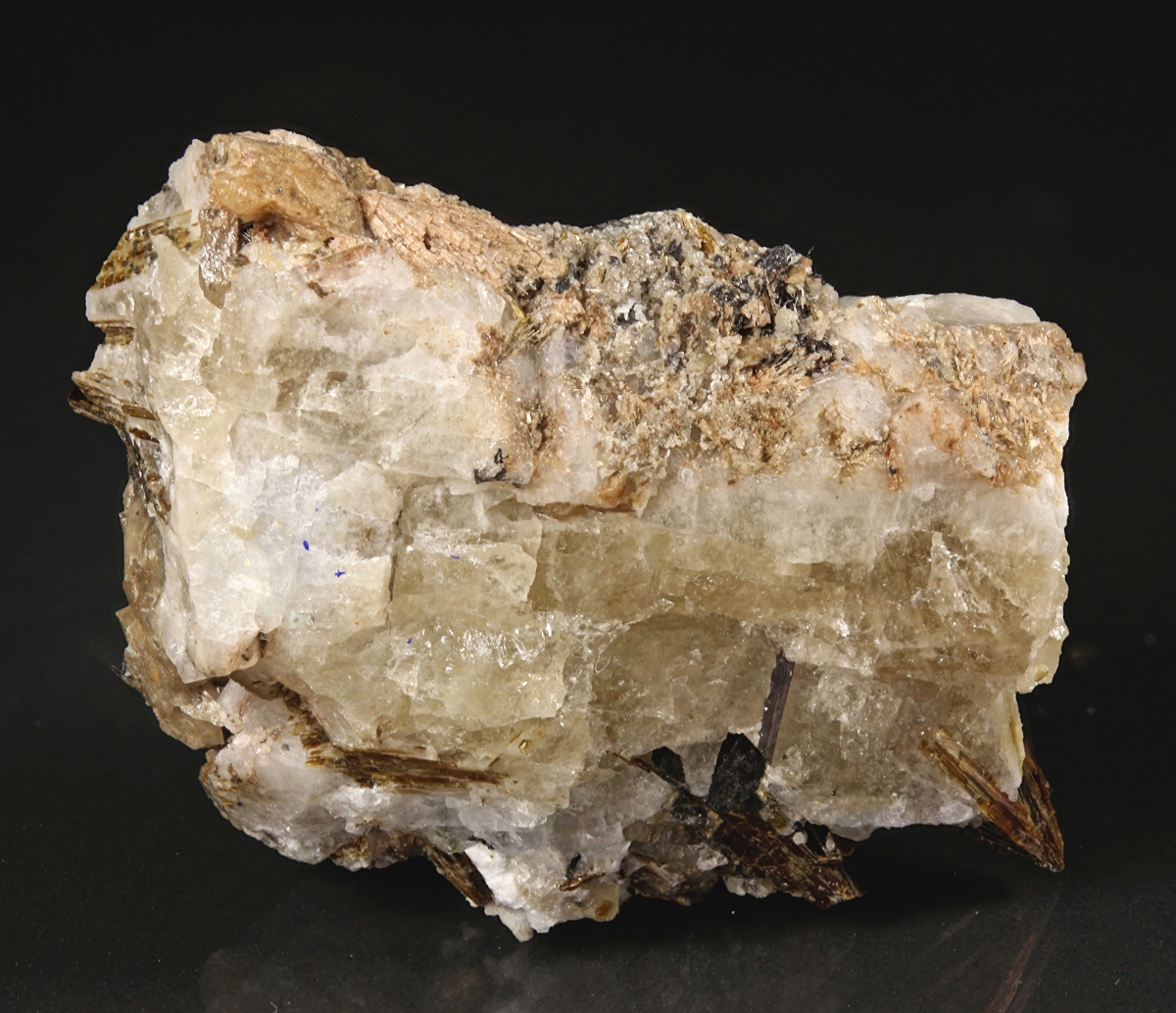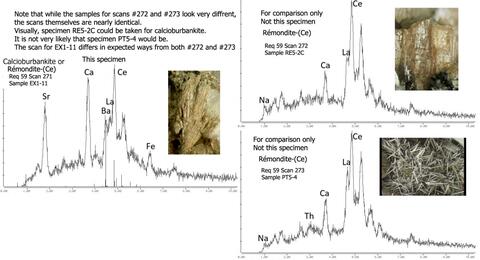Regarding the “calcioburbankite”: I think that this actually is calcioburbankite (for which MSH is the TL). But, unlike the more common crusts of calcioburbankite on petersenite-(Ce) or the silky, translucent, short prismatic crystals found exclusively in marble xenolths, this type of calcioburbankite is difficult to distinguish, both visually and chemically, from rémondite-(Ce).
The EDS scan (#271) for this specimen is distinctly different from scans #272 and #273, which are for examples of two different, characteristic, types of MSH rémondite-(Ce). Moreover, the differences – more Ca and Sr, less Na – are precisely what one would expect for calcioburbankite vs rémondite-(Ce). However, I can’t completely rule out rémondite-(Ce). The full story is much too long-winded for here. The bottom line is that WDS would be needed to be sure, so I can’t absolutely guarantee calcioburbankite rather than rémondite-(Ce). Possibly both species are present. The differences in composition of type calcioburbankite and type rémondite-(Ce) are pretty minor. I posted it as calcioburbankite but in what follows, I will call it “burbankite group”. Perhaps that is an overabundance of caution.
Calcioburbankite and rémondite-(Ce) are about equally rare at MSH, and very rare world-wide. Either way, this is a remarkable specimen. In addition to several aggregates and isolated crystals of “burbankite group”, the specimen features a few small rosettes of pyrophanite on astrophyllite (some of which is nicely terminated), and small crystals of catapleiite.
The first photo (FOV 7.0 x 4.4 mm) shows the main group of radiating “burbankite group”, prisms. These crystals show strong REE absorption lines – as would be expected from the EDS scan. Ce and other REE elements are not “essential” in calcioburbankite, whereas they are in rémondite-(Ce). However that does not make rémondite-(Ce) the more likely species. The “essential” vs “nonessential” designations are due to the IMA naming conventions. In fact, type calcioburbankite and type rémondite-(Ce) have nearly identical amounts of REE, and even the amounts of Ca are only slightly different. Rémondite is – (Ce) because ΣREE > Ca, and Ce is the most abundant REE (even though it is << Ca), whereas calcioburbankite has Ca > ΣREE. Moerover, some of the other “burbankite group”, sprays on the specimen show little, if any, REE absorption, so the amount of REE in these crystals is apparently quite variable. (That actually makes calcioburbankite more likely.)
The second photo (FOV 3.6 x 2.0 mm) shows a pair of translucent “burbankite group”, crystals, the thicker one ca 0.6 mm in diameter. Mote the roughly rectangular, metallic plate embedded in analcime (bottom right). I have no idea what it is.
The third photo (FOV 2.9 x 2.0 mm) shows two “crossed” aggregates of nearly colorless “burbankite group”, with a somewhat silky luster similar to that of the calcioburbankite in marble xenoliths. The longest crystal is about 1.6 mm.
The fourth photo (FOV 2.4 x 3.1 mm) shows another group that looks somewhat like the gray type of rémondite, but I think that these are just nearly colorless crystals discolored by “cavity dirt”.
The fifth photo (FOV 2.5 x 3.7) shows a distinctly redder spray of “burbankite group”, that looks more like the red-orange type of rémondite. (However, the real color is not so saturated – my camera loves red.)
The sixth photo (FOV 4.5 x 6.8 mm) shows another very pale spray of “burbankite group”, on aastrophyllite. The crystals are ca 2.1 mm long.
The seventh photo (FOV 4.7 x 6.7 mm) shows the best terminated astrophyllite on the specimen. Caveat: This spray is not well placed on the specimen – it sticks out “backwards” as a sort of “horn” (see the full-view photo).
The eighth photo (FOV 2.0 x 2.5 mm) shows the nicest pyrophanite rosette. It spans ca 1.2 mm.
The ninth photo (FOV 4.7 x 3.6 mm) shows some catapleiite spanning 1.9 mm, with individual crystals 0.9 mm. There is also some pyrophanite spanning 1.25 mm and a few blades of astrophyllite, seemingly growing right through the catapleiite.
In the full-view photo, the best “burbankite group”, is at top left.
There are more (small) examples of all of these minerals on the specimen.
Single item shipping weight is 3.3 oz (94 g). For shipments outside the USA, up to a total weight < 8 oz (225g), this can be combined with items from this or other auctions for the same postage.
Within the USA, postage increases by about $0.20 per ounce. Above 13 oz, I will use Priority Mail (ca $9.25 including packing – varies by destination).







